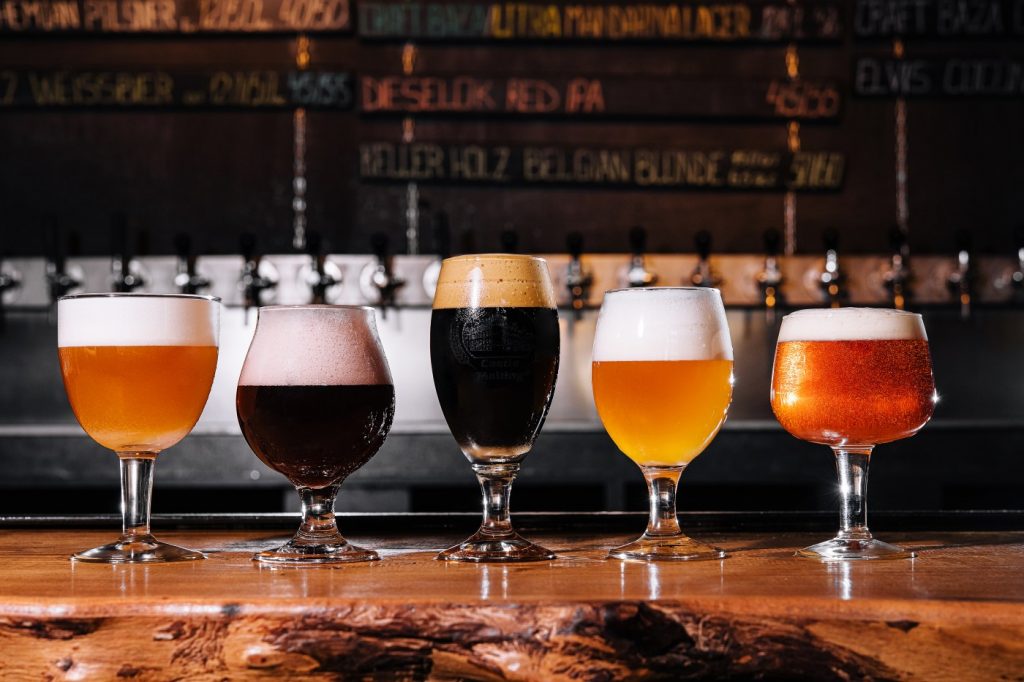Last year felt the closest to normal since the pandemic began in 2020, but most craft breweries continued to struggle mightily. One lingering aftereffect of the pandemic is that many people are going out to eat and drink less frequently than they once did. While that may be less of a problem for breweries that can or bottle their beer, it’s been rough on brewpubs and keg-only breweries, and it’s not doing bars and brewery taprooms any favors. And ongoing issues with supply chains and the cost of ingredients continue to raise the price of your pint, further slowing sales.
Drinkers are also shifting loyalties. Many people, especially younger adults, are drinking less, and when they do drink, they often turn to hard seltzer, cider, cocktails — including ready-to-drink ones — and craft spirts. So retailers are allocating less space for beer in stores, which then makes it harder for breweries to find a place to sell their beer.
As a result, several breweries in the Bay Area have closed or have announced they will be closing soon, including Ale Industries, Harmonic, Hermitage, Local, Marin and, most dismaying of all, Anchor Brewing. There were other changes, like Drake’s acquiring Bear Republic, but at least that will keep the brand going. During 2023, 420 new breweries opened, while 385 closed, according to the Brewers Association — a small net gain, but significantly slower growth than just a few years ago.
Anchor Steam, which had been brewed in San Francisco for 127 years, closed earlier this year. (Photo by Justin Sullivan/Getty Images)
IPA’s dominance and lager’s recent ascendancy into the mainstream may come at the expense of beer diversity. IPAs account for around 43% of all craft beer sold, and craft pilsners and other pale lagers combined add up to about the same percentage.
Over the years, the average bar has gone from offering no meaningful choice — “we’ve got both kinds, domestic lager and imported lager” — to offering a panoply of different brews: golden ale, wheat, pale ale, brown ale, porter, stout, Helles, pilsner, barrel-aged and fruit beers. But today, most bars have multiple IPAs and lagers — but often not much beyond that. I find myself excited by to see a tap handle offering a brown ale, a mild ale, a doppelbock or a gose.
IPAs continue to dominate the craft beer space, accounting for about 43% of all craft beer sales. (Courtesy Getty Images/iStockphoto)
A number of previously common beer styles have all but disappeared. I find myself ordering a brown ale or a hefeweizen whenever I spot one in the wild because it’s rare, and I want to support the brewery that made it and the bar or restaurant that is serving it. Every beer lover should do likewise, or we may lose more beer styles. Sour beers aren’t going away — whew! — but they are receding into more of a niche market. If you love them, support them.
One trend to look out for in 2024 is experimentation with pilsners. Look for the use of new hop varieties in the new-ish West Coast Pilsners, traditional lagers brewed with less traditional hops that favor West Coast varieties.
Related Articles
More than 100 Bay Area festivals and fairs are on deck for 2024
A huge new beer garden is coming to Walnut Creek in 2024
Danville brewery plans new beer garden in Pleasanton
Fremont’s German deli, Munchner Haus, is closing after 30-plus years
15 long-lived Bay Area restaurants we said goodbye to in 2023
With nearly half of all consumers claiming they’re interested in low-alcohol drinks, and 45% looking for non-alcoholic drinks, the “lo-no” market continues to grow. Athletic Brewing still leads in the nonalcoholic beer category, but there’s a growing selection to choose from. The German N/A, Clausthaler has long been a leader in the space and now offers a dry-hopped IPA version, Clausthaler Grapefruit, and Claushaler ISO 0.0%. Meanwhile, larger craft breweries have their own nonalcoholic versions these days, like Lagunitas’ IPNA (and their Hoppy Refresher), Brooklyn Brewery’s Special Effects series, and Samuel Adams’ Just the Haze N/A and Gold Rush Golden Ale. Sierra Nevada just entered the market this December with its Trail Pass IPA and Trail Pass Golden, both non-alcoholic offerings in cans.
2024 should be another interesting brew year in the Bay Area.
Contact Jay R. Brooks at [email protected].
For more food and drink coveragefollow us on Flipboard.


